Meet the director of golf: Graham Chambers
The director of golf at Longhirst Hall Golf Club in Northumberland talks about the venue’s fascinating history from coal mine to EuroPro Tour host, the last, extraordinary, year and what the next few years might look like for the golf industry.
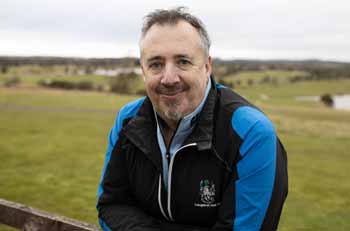
Could you tell us a bit about Longhirst Hall Golf Club?
Longhirst was opened for play in the summer of 1997, so is a mere baby in terms of other great courses in the area. It was for many years before that a deep opencast coal mine, that featured ‘big Geordie’, the largest coal excavator in the world. When that mining ended, and the land was reclaimed, it did leave a wonderful blank canvas to create what we have today. Both our courses, The Lakes and The Dawson, named after Thomas Dawson, the owner who had the vision to create this facility, have hosted the PGA EuroPro Tour, and are regularly on the county circuit of events. Indeed, up to our last event we were the longest serving EuroPro host with seven consecutive years.
What were yours, and Longhirst Hall’s, experience of lockdown like from March 2020 to the venue reopening a couple of months later?
It was a strange time. From a wet, awful winter, we got the lockdown date. Then appeared the most beautiful weather for two months. It allowed us to carry out all our spring maintenance on the course, and maintain it in relatively bliss conditions. I did do weekly videos for members to see what we were doing, and indeed what they were missing out on the course. These went down well with them, and helped keep a connection with the membership, and assure them that we were working on their behalf for their return in the weeks to come. During this time, I personally was out on the courses, on whatever machine, on whatever task was required. It was a joy seeing the courses come to life after the winter, but sad also that the members were not playing in fantastic conditions.
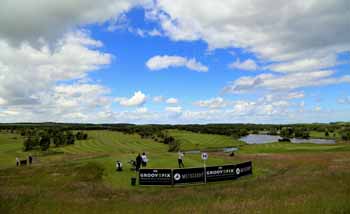
Between reopening and the next lockdown in November, what was it like? Did you experience the surge in demand for golf?
What arrived after the reopening, was astonishing. Yes, golf was one of the only things people could do, but the sheer scale of the surge was incredible. From day one, the joy in people’s faces rolling in, day after day. Where we in particular benefited was the fact we have two courses. That allowed us to have a small amount of availability for visitors, which in turn led to over 250 new members, taking us close to capacity for the two courses. We were regularly having 400-plus players coming in every day. That did have its downside too, with the wear on the course. Little did we know we would get a welcomed enforced rest later in the year. It did create a great buzz around the place, however some of the longer-term members found it difficult to adjust to a much busier than normal environment.
And what was it like going back into lockdown in November, reopening in December, and then closing again in January?
It was a case of expecting the inevitable really, and after a wet autumn up here, again, it was a bit of a blessing as the courses were struggling in heavy wear areas. It was still sad though, having to inform members of a situation that we could not change. Given the fluidity and regularity of changes dealt to us as an industry, receiving differing opinions from many sides, as well as, importantly, our members’ concerns, it was a difficult period to be seen to stay balanced with our own views, being able to react to events, being able to plan and have these plans change at short notice, all the while staying focused on the job at hand. It has however, given us time to upgrade our systems behind the scenes, by bringing our plans for this forward. Working with the great team from BRS on the installation of the G1 system. It streamlines all we do now on to one platform. Moving forward, from new member applications through to handicaps and the World Handicap System, it makes it so much easier for our admin team, and indeed for our members.
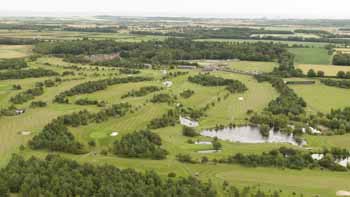
What are your thoughts about closing golf courses generally due to coronavirus?
We all have views on how golf could perhaps have carried on in some form. However, there is no getting away from the fact that we were told to close during these periods. I know personally that we could have, without a doubt, operated a safe environment for all golfers and staff to carry on playing and working. But that was not to be and we had to work with the hand we had all been dealt.
Has the venue’s approach to marketing changed as a result of the pandemic?
We have always been proactive on social media marketing. I’ve found this year has been more about communicating information rather than marketing. Gladly, the golfers were coming to us due to the surge we spoke about earlier. As long as people are off on furlough, or having the extra time to play, capacity at clubs is still going to be at a premium, so I can see the normal marketing taking a lesser role, with the continuation of regular, but importantly interesting social media content and information.
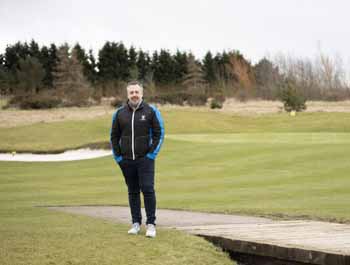
What social distancing measures have been put in place?
All the regular measures were in place that we have all seen in all venues and shops and so on. What we found here, that worked really well during the height of the surge, was having a marshal in the car park with tee times, sending the groups individually to check in, getting them checked in then off to the starter on the first tees. It did give the golfer confidence that we had as much as we could covered as possible, in and around the car park and clubhouse check in. The help we received from member volunteers helped us enormously get through this period. It was a team effort that ensured everyone could still play in the knowledge we had done all and more than we could.
How have you adapted to the new World Handicap System?
I’d almost forgotten about that! That too was building momentum during the phases of lockdown opening and closing. Again, it was something that was going to happen, and was a case of communicating as much detail as possible to the members, to make the transition as smooth as possible, and getting systems in place, and training staff for the deluge of questions! I can see an initial surge of questions when we reopen [this interview was conducted before March 29], given the season will be starting, and a lot of golfers will have forgotten the info. Shortly prior to reopening, we will be sending out communications so they can refamiliarise themselves once more.
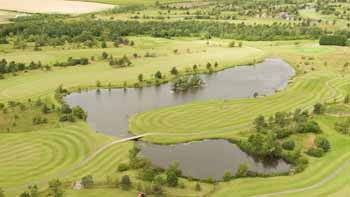
Does Longhirst Hall reach out to beginner golfers, including women and juniors?
Absolutely. Our pro, Paul Fiddes, ran a great academy while we could last year, and we are lucky to have the academy area and driving range to facilitate his coaching. We have always encouraged junior golf, with junior members having no restrictions when they want to play. They are part of the club and crucial to our’s and the game’s development, and indeed we have produced two fine young pro golfers from our junior ranks.
As a director of golf, how much of your time is spent teaching the game?
I’m an average 14 handicap at best I’m afraid. I like playing elsewhere, more so to see what other venues are doing, and to pick up any useful ideas that we could maybe implement here at Longhirst. My day normally consists of a couple of hours in the office, then about five hours on the course helping the team on maintenance, then back in the office. So, I’m not a player as such, more hands on. That way I can see on a daily basis what is happening on and off the courses.
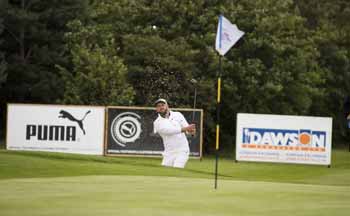
Euro Pro Tour, Dason & Sanderson Classic, Longhirst Golf Club.
7th July 2017
Picture By Mark Robinson.
How do you think the industry and the role of golf club manager has changed since you first started working in golf?
When we opened back in 1997, we opened with many membership options, a policy that many clubs now are implementing. Were we ahead of the time, thinking outside the box, or simply using our retail knowledge that we had? Anyway, it worked and continues to do so thankfully. Even back then, 25 years ago, and more so over the last five, the game that we see here is becoming younger. It’s more appealing, more fashionable, better access to viewing on television, better and easier access to joining clubs and visiting other clubs. What we have to remember is that golfers use the game as part of their leisure time, so we need to create an enjoyable environment and experience for them. Stresses and strains of modern life need to be forgotten about on the golf course. Having membership options and fees to recognise those differing lifestyles too is a huge factor in moving forward.
What are your predictions for the next few years for the UK golf industry?
The first part is to get back to normal from this Covid situation as soon as possible. Following the surge last year in play and memberships, I can see another at the end of the current lockdown. We must ensure that as an industry we retain this momentum and not let the new players / members drift away. There will be a natural drop off, but we must hold on to the majority. It’s a great headstart to keeping the game growing. Creating that ‘experience’ will go a long way in helping us to do that. To add to our work however, clubs, private and proprietary, along with the sport’s governing bodies, simply must work together, and create a level playing field for all to progress.















Just joined Longhirst, fantastic course!